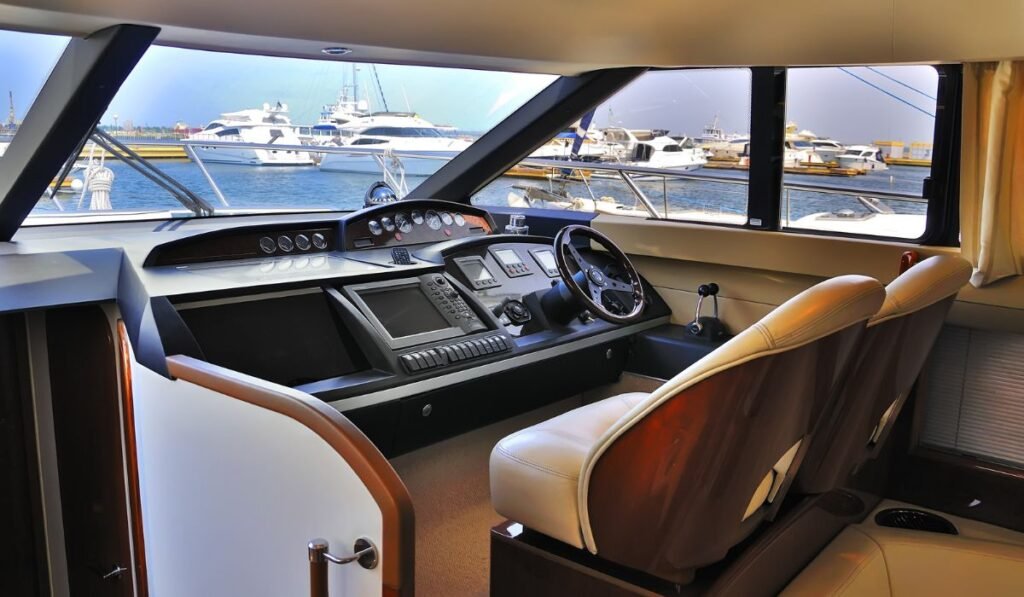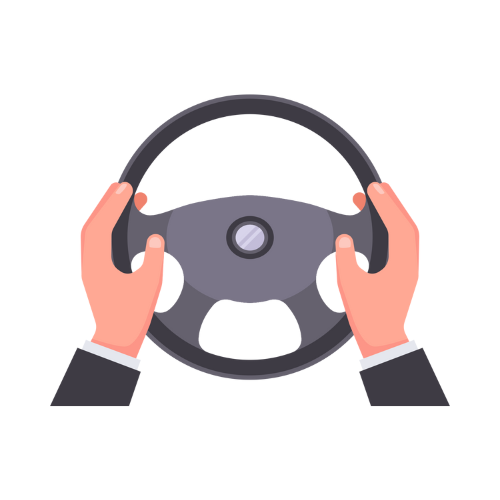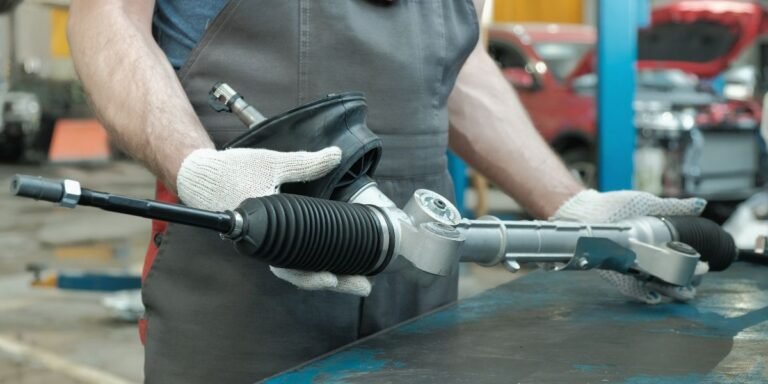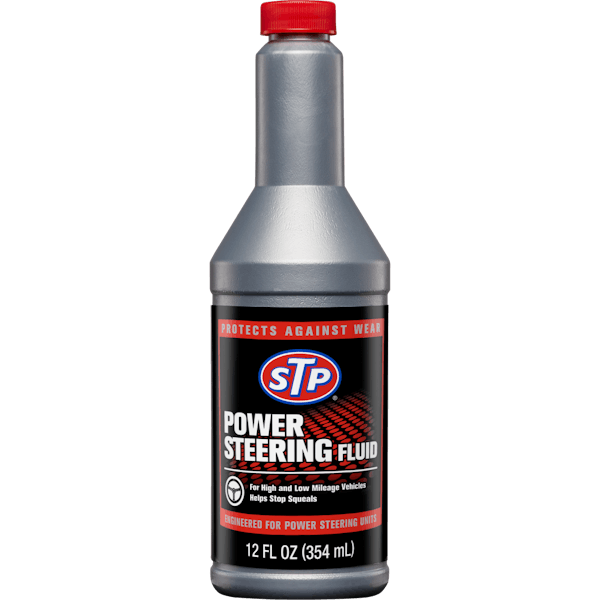How to Adjust Mechanical Boat Steering: Quick Fixes
To adjust mechanical boat steering, turn the adjustment nut clockwise or counterclockwise. Check for proper alignment.
Proper maintenance of your boat’s steering system is crucial for safe and efficient navigation on the water. Adjusting the mechanical boat steering ensures smooth operation and responsiveness when maneuvering through different water conditions. By following simple steps to adjust the steering mechanism, you can enhance the overall performance of your boat and ensure a safe and enjoyable boating experience.
This guide will provide you with clear instructions on how to adjust the mechanical boat steering system effectively, allowing you to maintain control and precision while out on the water.
Mechanical Boat Steering
Boat steering is a crucial component of any vessel. It is the mechanism that enables the captain to navigate and control the boat. Mechanical boat steering is a popular type of steering system that is found in many boats.
Mechanical steering systems are simple, reliable, and easy to maintain. In this article, we will discuss the essentials of boat steering and the significance of proper steering maintenance. We will also provide a step-by-step guide on how to adjust mechanical boat steering.
Essentials Of Boat Steering:
Before we discuss how to adjust mechanical boat steering, it is important to understand the essentials of boat steering. The two main components of a boat steering system are the helm and the steering cable.
The helm is the device that the captain uses to turn the boat. It is usually located on the console of the boat. The steering cable connects the helm to the steering mechanism at the stern of the boat. When the captain turns the helm, the steering cable moves the steering mechanism, which turns the boat.
Significance Of Proper Steering Maintenance:
Proper steering maintenance is crucial for the safety and performance of your boat. A poorly maintained steering system can cause accidents, damage to the boat, and expensive repairs. It is important to inspect your boat steering system regularly and make any necessary repairs or adjustments.
Some signs that your boat steering system may need maintenance include difficulty turning the boat, excessive play in the steering wheel, and a stiff or loose steering wheel.
Maintaining your boat steering system is easy and can be done by following a few simple steps. Regularly inspect the steering cable for signs of wear or damage. Lubricate the steering cable and the steering mechanism at the stern of the boat.
Adjust the tension on the steering cable as needed. These simple steps will help ensure that your boat steering system is working properly and will keep you safe on the water.
Now that we have discussed the essentials of boat steering and the significance of proper steering maintenance, let’s move on to how to adjust mechanical boat steering.
Identifying Common Steering Issues

Symptoms Of Steering Problems
When steering a boat, it’s crucial to be alert to any unusual behavior that might indicate a steering issue. Here are some common symptoms of steering problems:
- Stiff or difficult steering
- Excessive play or looseness in the steering wheel
- Unusual noises when turning the wheel
- Steering wheel vibration or feedback
Steering Wheel Feedback
One of the key indicators of potential steering issues is the feedback you receive through the steering wheel. Unusual sensations or feedback can be a sign of an underlying problem. Pay attention to any of the following:
- Excessive resistance when turning the wheel
- Unexpected play or slop in the steering
- Irregular vibrations or shaking
To adjust your boat’s mechanical steering, you’ll need the following basic toolkit:
– Wrenches: You’ll need different sizes of wrenches, including adjustable wrenches, socket wrenches, and open-end wrenches, to adjust the steering system’s various components.
– Screwdrivers: Both flathead and Phillips head screwdrivers are necessary for adjusting and tightening screws in the steering system.
– Pliers: You’ll need pliers to grip and hold components while you’re adjusting them. Needle-nose pliers are especially useful for reaching tight spaces.
– Lubricant: Use lubricant to keep the steering system’s moving parts running smoothly. Grease is suitable for the rudder shaft and steering gear, while oil is better for the helm and cable.
– Cleaning supplies: Keep the steering system clean and free from debris using a soft-bristled brush, rags, and cleaning solution.
Safety Equipment for Maintenance Work
When performing maintenance work on your boat’s steering system, safety should be a top priority. Here are some essential safety equipment you’ll need:
– Gloves: Wear gloves to protect your hands from cuts, scrapes, and other injuries while handling sharp or rough components.
– Eye protection: Use safety glasses or goggles to protect your eyes from flying debris and other hazards.
– Respirator: If you’re working in a confined space or using chemicals, wear a respirator to avoid inhaling harmful fumes.
– Life jacket: Always wear a properly fitting life jacket while working on your boat, especially if you’re near the water or working on the steering system while the boat is in the water.
In conclusion, before starting the process of adjusting your mechanical boat steering, it’s essential to have the right tools and supplies and prioritize safety while doing maintenance work. By following these guidelines, you can ensure a smooth and safe maintenance experience.
Pre-adjustment Checks
Before adjusting the mechanical boat steering, it is essential to perform a few pre-adjustment checks to ensure the smooth operation of the system. By inspecting the steering components and assessing cable tension, you can identify any potential issues and address them before making any adjustments.
Inspecting Steering Components
Start by visually inspecting all the steering components to ensure they are in good condition and properly connected. Look for any signs of wear, damage, or corrosion, as these can affect the steering performance. Check the steering wheel, steering cables, pulleys, and connections for any loose or missing parts. Pay particular attention to the cable connections at the helm and the engine end.
If you notice any issues during the inspection, such as frayed cables or loose connections, it is crucial to address them before proceeding with the adjustment. Replace any damaged components and tighten any loose connections to ensure the steering system operates smoothly.
Assessing Cable Tension
Proper cable tension is vital for accurate and responsive steering. To assess the cable tension, you need to check the play or slack in the steering system. Start by turning the steering wheel from lock to lock while observing the movement of the engine or outboard. If you notice excessive play or delayed response, it indicates a need for adjustment.
To measure the cable tension, you can use a tension gauge specifically designed for boat steering systems. Attach the gauge to the steering cable and apply tension until the gauge shows the recommended tension level. If the tension is too low or too high, you will need to adjust it accordingly.
It is important to consult your boat’s manual or the manufacturer’s guidelines to determine the appropriate cable tension for your specific steering system. Following the recommended tension levels will ensure optimal steering performance and prevent premature wear or damage to the components.
By performing these pre-adjustment checks, you can identify any underlying issues and address them before making any adjustments to the mechanical boat steering. Inspecting the steering components and assessing cable tension will help ensure the system operates smoothly and efficiently, providing you with a safe and enjoyable boating experience.

Adjusting Steering Cable Tension
Adjusting the tension of your boat’s steering cable is an essential maintenance task that ensures smooth and responsive steering control. Whether you need to tighten or loosen the steering cable, it’s crucial to understand the steps involved and when to make these adjustments. In this section, we will guide you through the process of adjusting the steering cable tension, providing clear instructions to help you get your boat’s steering system in optimal condition.
Steps To Tighten The Steering Cable
If you notice excessive play or slack in your boat’s steering system, it may be necessary to tighten the steering cable. Follow these steps to adjust the tension and improve your boat’s steering performance:
- Begin by locating the steering cable’s adjustment nut or turnbuckle. This is typically found near the engine or at the helm console.
- Using an appropriate wrench or tool, turn the adjustment nut clockwise to tighten the cable. Make sure to turn it gradually, checking the steering response after each adjustment.
- Continue tightening the cable until you achieve the desired level of responsiveness and minimal play in the steering wheel.
- Once you are satisfied with the tension, secure the adjustment nut in place, ensuring it is tight enough to prevent any unintentional movement.
- Test the steering system by turning the wheel in both directions to ensure smooth and precise control.
Here’s a list of frequently asked questions
3. How Do I Check the Steering System for Issues?
- Answer: Inspect the steering system for any visible damage, wear, or loose components. Check the steering cables for fraying or binding, and ensure all connections are tight and free of rust or corrosion.
4. How Do I Adjust the Steering Cable Tension?
- Answer: Locate the steering cable adjuster, usually found at the steering helm or at the connection to the steering mechanism. Use a wrench to adjust the tension by turning the adjuster clockwise to tighten and counterclockwise to loosen. Aim for a balanced tension where the steering feels responsive but not overly tight.
5. What Is the Correct Steering Cable Tension?
- Answer: The correct tension should allow the steering wheel to turn smoothly without excessive play or resistance. The steering should not bind or have too much slack. Check the manufacturer’s specifications for your specific steering system if available.
6. How Do I Remove Slack from the Steering System?
- Answer: To remove slack, adjust the steering cable tension as described above. You may also need to check and tighten any loose connections in the steering system. Ensure the steering cables are properly routed and not obstructed.
7. How Can I Fix a Steering Wheel That’s Off-Center?
- Answer: If the steering wheel is off-center, it might indicate that the steering cables need realignment. Adjust the steering cables or steering linkage to ensure the wheel is centered when the boat is going straight. You may also need to adjust the trim tabs or outboard motor alignment.
8. How Do I Lubricate the Steering System?
- Answer: Check the manufacturer’s instructions for lubrication requirements. Generally, you can lubricate the steering system by applying marine-grade grease to the steering cable and any moving parts. Avoid over-lubricating, which can attract dirt and debris.
9. What Should I Do If the Steering System Is Stiff?
- Answer: A stiff steering system may be caused by incorrect cable tension, lack of lubrication, or binding in the steering components. Adjust the cable tension, lubricate the system, and inspect for any obstructions or damage that could be causing the stiffness.
10. How Often Should I Check and Adjust My Boat’s Mechanical Steering?
- Answer: Regularly inspect and adjust your boat’s steering system as part of routine maintenance. Check the system before each use and perform a more thorough inspection at least once a year or according to the manufacturer’s recommendations.
11. Can I Adjust the Steering System Myself, or Should I Seek Professional Help?
- Answer: Basic adjustments and maintenance can often be done yourself if you have the necessary tools and knowledge. However, for more complex issues or if you’re unsure about the adjustments, it’s advisable to consult a marine technician or professional.
12. What Are Common Problems with Mechanical Boat Steering?
- Answer: Common problems include steering stiffness, excessive play or slack, off-center steering wheel, binding cables, and worn-out components. Regular maintenance and prompt repairs can help address these issues.
13. How Do I Align the Steering Wheel with the Boat’s Centerline?
- Answer: Align the steering wheel by adjusting the steering linkage or cables so that the wheel is centered when the boat is traveling straight. Check and adjust the alignment of the steering mechanism and ensure that the steering cables are properly adjusted.
14. What Maintenance Is Required for Mechanical Boat Steering?
- Answer: Regular maintenance includes checking and adjusting cable tension, lubricating moving parts, inspecting for wear and tear, and ensuring all connections are secure and free of rust or corrosion.
15. Can Steering System Problems Affect Boat Safety?
- Answer: Yes, problems with the steering system can significantly affect boat safety by impairing your ability to steer effectively, which could lead to unsafe navigation. Addressing steering issues promptly is crucial for safe boating.
Conclusion
Adjusting mechanical boat steering is a crucial maintenance task for smooth and safe sailing. By following the step-by-step process and regularly checking for wear and tear, you can ensure optimal performance and longevity of your boat’s steering system. With these insights, you can confidently navigate the waters with ease and precision.

Specializes on car underchassis & power steering repair. We have experienced mechanic to attend all your underchassis & power steering repair needs.




